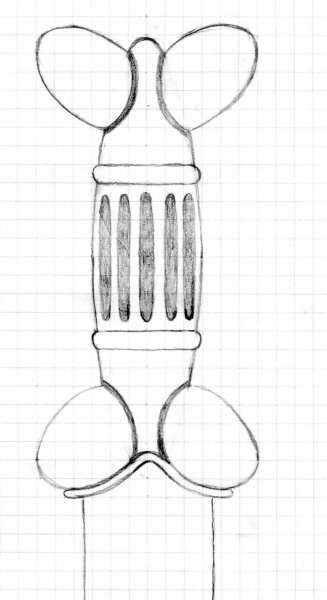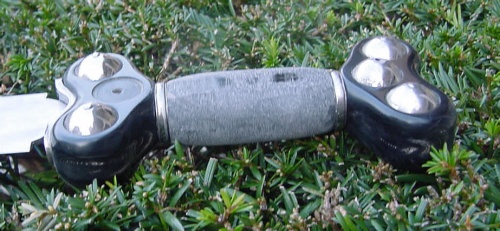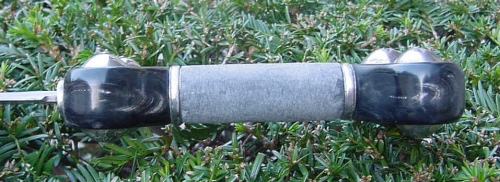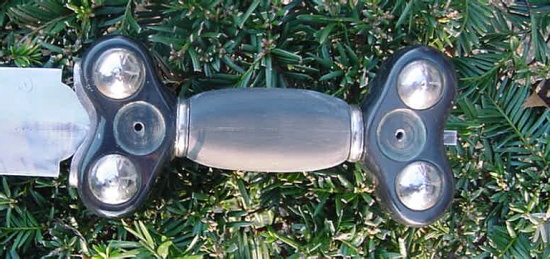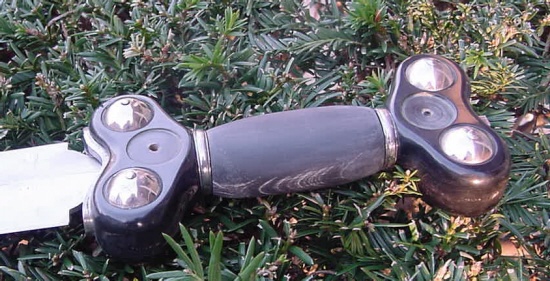Had some changes along the way, but the sword was finished up the end of September of last year. There was a problem and the blade chipped the weekend when I delivered it to Nate. There were rumors, drama, and a bunch of crap....it is all addressed in this post.
http://www.myArmoury.com/talk/viewtopic.php?t=2728&highlight=
I'll post the finished pics here as well and some more I found before it was finished. As you will be able to see though one of the biggest changes that happened was the guard material. I liked the buffalo horn very much, but it didn't go well with the walnut and the walnut I had used wasn't giving me the look I wanted. So I ordered some horn blocks from Origindia and replaced the walnut. Without a doubt the best change I made.
Most of the inspiration for this sword came from a sword we found in Navarro, plate CXVI. There is also a very similar British example of one of these as well, although I would have to dig out research to tell you what book it was found in. With no real measurements to work from, I tried to make dome size in relative proportion with the blade as to the domes on the original. At one time I had (still do) a ton of drawings with dome sizes anywhere from 1/2 inch to 1 inch, at various angles to each other, and with various grip lengths. In the end it come down to what captured the look and feel best for us, or maybe just me. *G*
One of the hardest and most stressful things about this whole project was making the seats for the domes to set in. The domes are set close enough together that if it was off the slightest that it would show pretty bad. Depth wasn't as much of an issue, but still had to maintain it as close as I could. What made it so stressful was that I had one shot with the horn and if I messed up it was ruined. Thankfully it worked out OK, and that I was able to reused the guards with the exception of the center domes.
As I said in the post above, I am using the guards, guard plate, grip spacers, and a new blade to rebuild the sword. The grip was destroyed when taking it back apart, not that I probably would have reused it anyway. The grip was the one thing I never way totally happy with on the finished sword. Currently the new blade is about 90% ground, just need to do a bit more to straighten the ridge line a bit and it will be ready to go. I finally received my horn order the week before last that I put in something like the second week in January.
I'm looking very forward to getting back to work on this project and finishing it up. Then I can work on my own personal la tene, the other part of the horn order. *G*
Shane

rough cut horn guards







